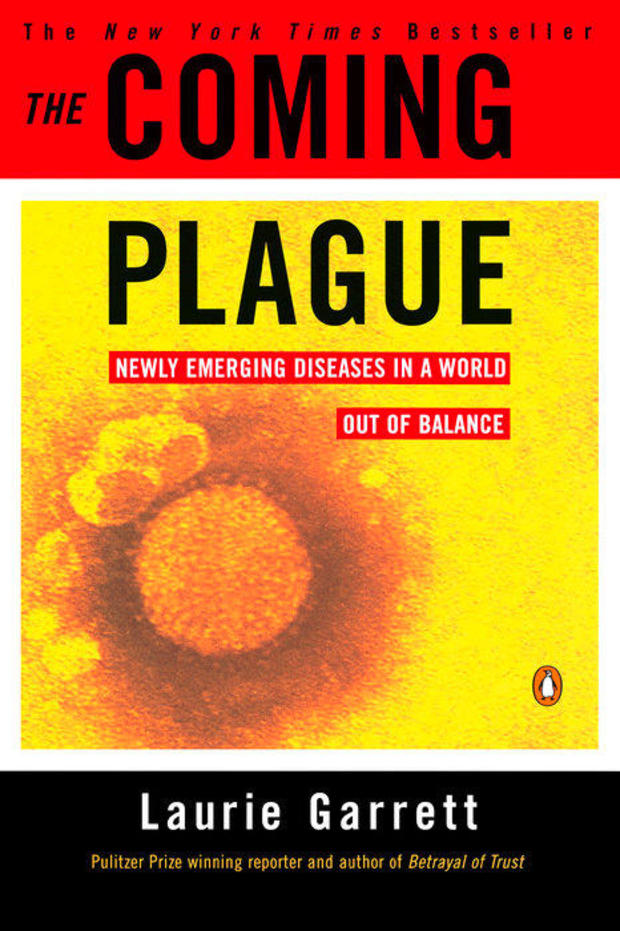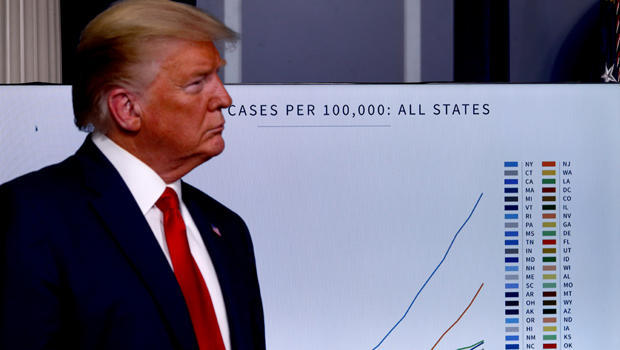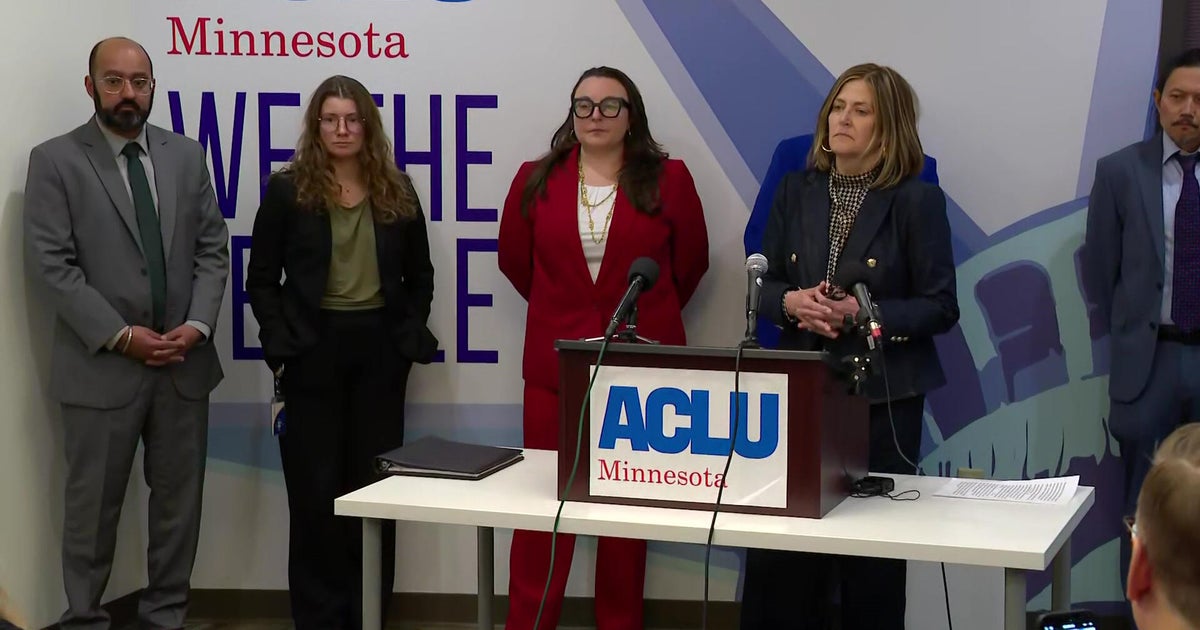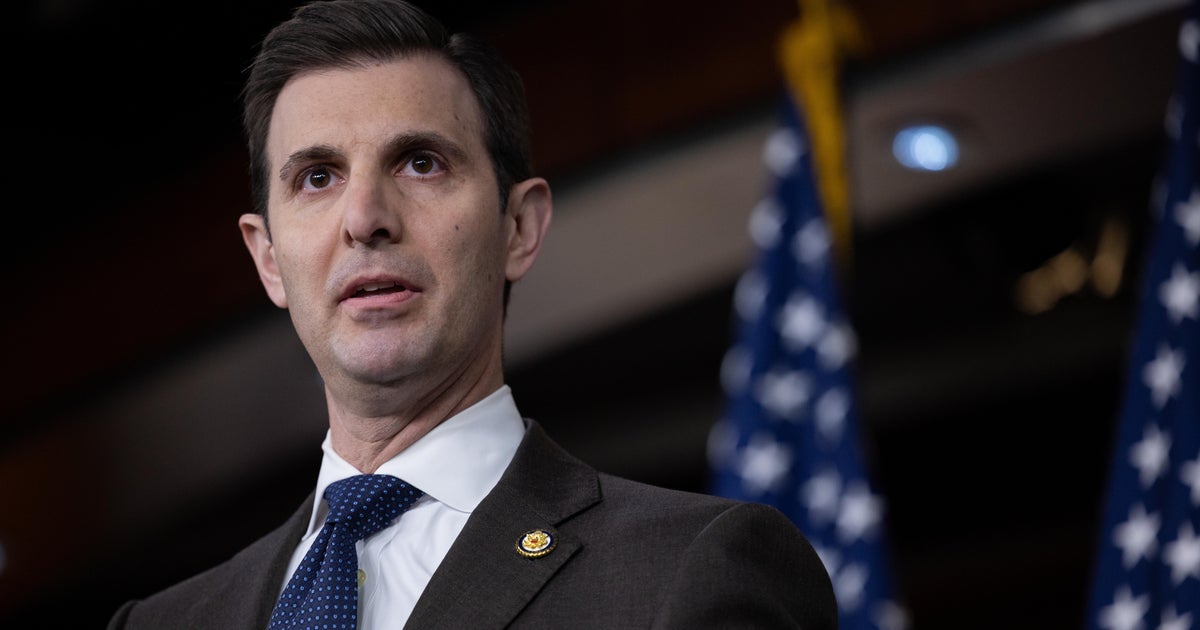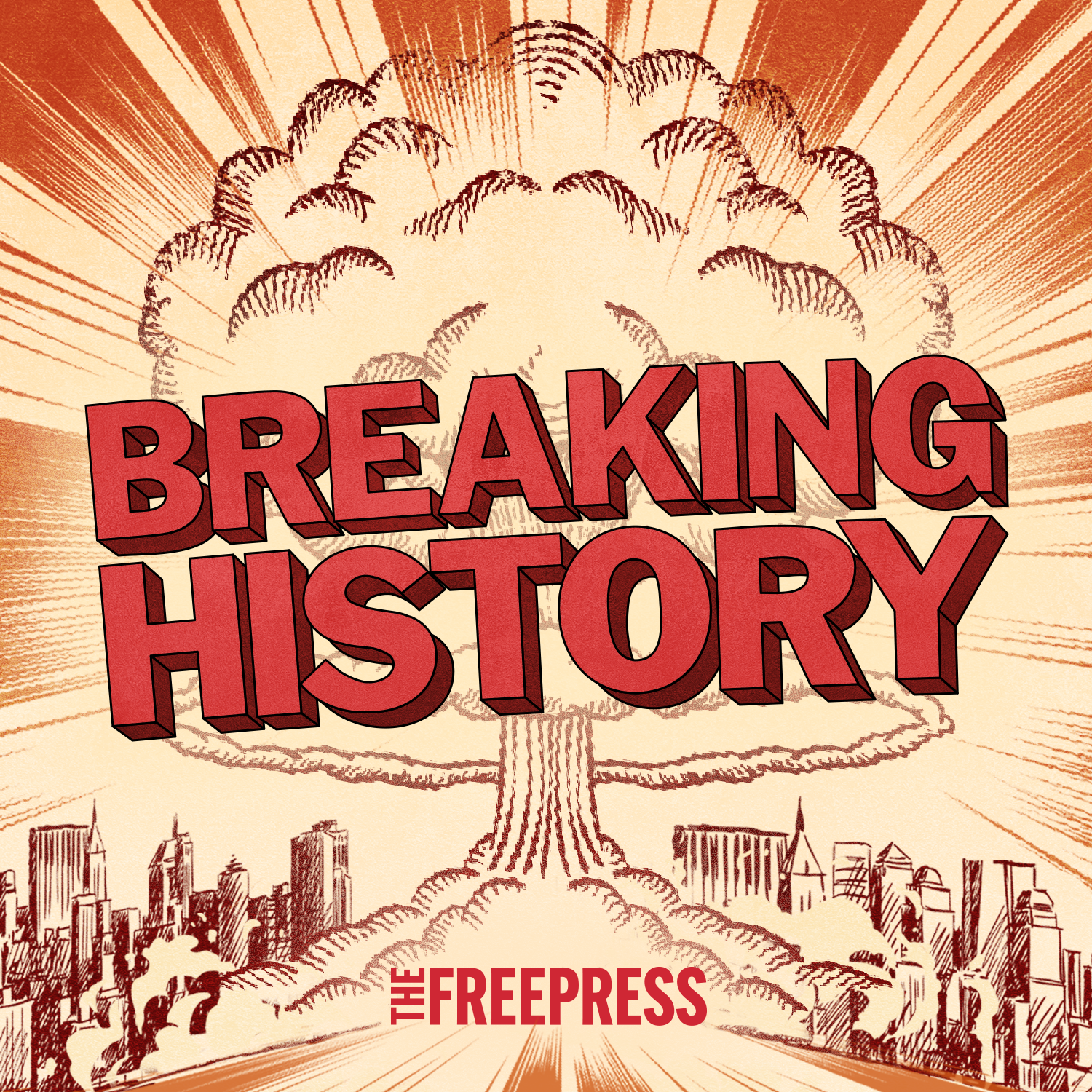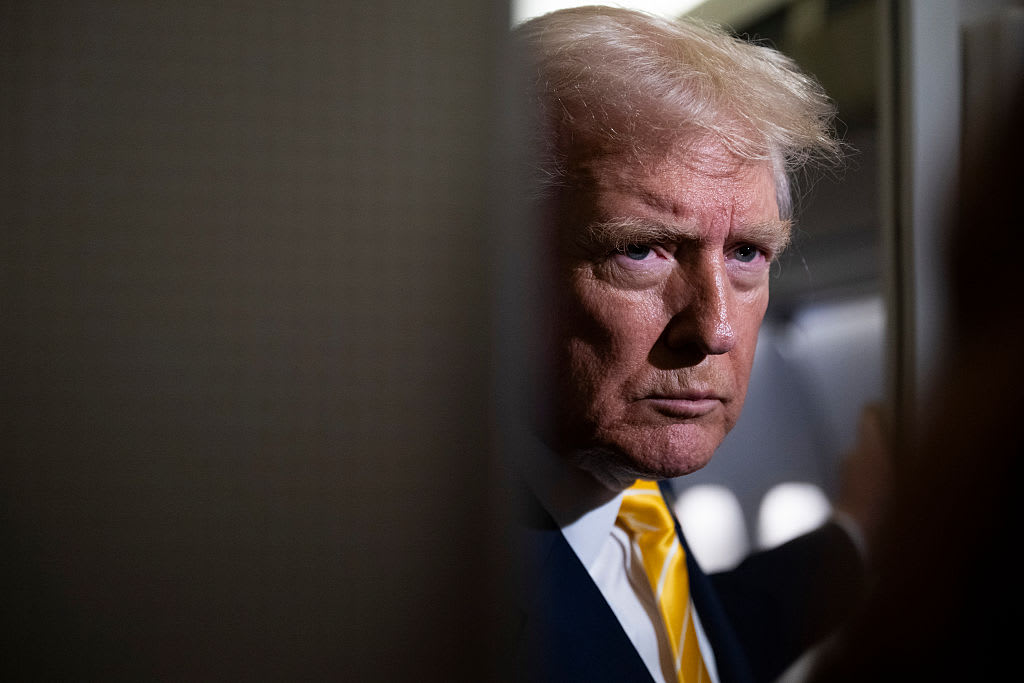The coronavirus response: Why wasn't America ready?
At four o'clock in the morning on Thursday, January 9, taking second billing to a pop star's big revelation ("Singer Justin Bieber revealed that he's been battling Lyme disease; he says that he's getting treatment"), coronavirus got its first mention on a CBS News broadcast.
"Scientists say a new virus related to SARS may be responsible for a mysterious pneumonia outbreak in China," said "CBS Morning News" anchor Anne-Marie Green.
The New York Times, on January 7, had posted this story on page 13: "China Grapples With Mystery Pneumonia-Like Illness."
By then, Chinese public health officials had already notified CDC director Robert Redfield about the virus. Redfield had immediately briefed Health and Human Services Secretary Alex Azar, who in turn alerted the National Security Council.
So, how did we get from those small, but worrying early warnings out of Wuhan, China, to now – to leading the world, not in managing the crisis, but in confirmed coronavirus cases and deaths?
To understand what went wrong, start with a nod to Watergate: What did the president know, and when did his White House know it?
"We now know that Xi Jinping went before the state council, the high governing body of China, and told them in a secret session on January 7 that the issue in Wuhan was so serious that he was personally stepping in and taking control," said Laurie Garrett, a Pulitzer Prize-winning science writer and author of "The Coming Plague." "The head of state of a nation of more than a billion people doesn't personally intervene in a little outbreak with a half-a-dozen cases. Uh-unh. We now know that the CIA was passing on to the White House, 'Look, there's something potentially catastrophic emerging.'"
Breaking news on January 17, the first U.S. attempt to shut the door on the virus:
But four days later, on January 21, the CDC reported the first case of COVID-19 here. Washington Gov. Jay Inslee said, "This is certainly not a moment for panic or high anxiety; it is a moment for vigilance."
Interviewed by CNBC the following day, at the World Economic Forum in Davos, Switzerland, President Trump reacted this way: "We have it totally under control. It's one person, coming in from China. It's going to be just fine."
But events indicated otherwise, as China put 20 million people under lockdown.
On January 30, the World Health Organization declared a global public health emergency, and the first confirmed case of person-to-person transmission of COVID-19 in the U.S. was announced.
The following day, the Trump administration restricted travel from China. "Foreign nationals, other than immediate family of U.S. citizens and permanent residents, who have traveled to China within the last 14 days, will be denied entry into the United States for this time," Secretary Azar said.
But not from Europe. That would not happen for more than a month, although Europe was the source of many U.S. infections, we now know.
But the China travel ban may have bought a little time. Professor Ashish Jha, head of the Harvard Global Health Institute, said, "My expectation – and I have to say, in retrospect, was quite wrong – was that there was massive planning happening in the U.S. government. I assumed there was a lot of ramping up of testing and getting our country ready for what was coming."
"But?" asked correspondent Martha Teichner.
"Well, it's really become clear now, that there was not," Jha replied.
The fact that the CDC's test kits didn't work meant that coronavirus was out there, spreading, and no one knew where.
What came next was six weeks of schizophrenia: Dueling versions of reality, the president dismissing the threat ("A lot of people think that goes away in April, with the heat"; "We have it very much under control"), versus the press ("We now have the first case with no immediate links to worldwide travel or a related illness").
But the nation was preoccupied, not with coronavirus, but with impeachment and the primaries.
"It was only at the end of February, early March, that it started dawning on us that, My God, we wasted six weeks of early warning time," Jha said.
It wasn't as if there was no road map. As Garrett showed Teichner, there have been U.S. government pandemic preparedness plans going back to the early 1990s: "Structural issues, who's in charge of what, what's the CDC's role versus the state health role. These are all in every single one of these plans, and they've all been debated by very wise people in governments both Republican and Democrat."
And set aside, just as the Trump administration set aside the "Playbook for Early Response to High-Consequence Emerging Infection Disease Threats and Biological Incidents" handed them by the Obama transition team.
Beth Cameron, currently vice president for global biological policy and programs at the Nuclear Threat Initiative, was one of the people who oversaw the development of the playbook. Until March 2017, she headed the office responsible for pandemic preparedness within the National Security Council. "Our job was to coordinate policy and to work with departments and agencies to make sure that we had the programs in place to prepare for the next pandemic, and to be more agile in responding," Cameron said. Their job "was" … because the office was eliminated in May 2018.
Gone, wrote Cameron in a Washington Post op-ed, was the ability to get ahead of emergencies: "Our job was to be the smoke alarm … sounding a warning at the earliest sign of fire — all with the goal of avoiding a six-alarm blaze."
Cameron told Teichner, "So, if our office had still existed, one of the key jobs would have been to make sure that we understood what was happening with the Strategic National Stockpile."
Garrett said that, in addition to a lack of COVID-19 tests, "We had no ready supplies of any equipment that could determine who was infected and who wasn't."
In an article in the May issue of the New Republic, "Grim Reapers," Garrett is scathing, blaming Mr. Trump, but also Xi Jinping: "Both Trump and Chinese President Xi Jinping instinctively sought to repress news of the true danger of their countries' outbreaks, and the reach of their infection zones, so as to minimize potential political damage to their regimes."
Garrett told Teichner. "Both of these men have screwed up everything that was possible for them to screw up."
Ashish Jha said, "Certainly I think China's lying made our response harder. I think our federal government's response, it was one failure after another after another."
According to Jha, it didn't have to come to this – a nation on lockdown, struggling to find a safe way out: "The total shutdown that we have experienced in our country, I don't believe that was necessary if we had done our job right in January and February. We were asleep at the wheel for so long that by the time March arrived, we really had no other choice but to shut the country down."
On February 27, when Mr. Trump said, "It's going to disappear. One day – it's like a miracle – it will disappear," the financial markets were tanking, and the known number of COVID-19 deaths began to ratchet up.
The miracle the president predicted hasn't happened yet. On March 13, with 47 Americans dead, President Trump declared a national emergency. "Two very big words," he called it.
On March 31, with 3,874 Americans dead, he predicted: "This could be a hell of a bad two weeks."
At the end of those two weeks, on April 13, he patted himself on the back: "All of the things we've done — nobody has ever done a job like this!" The tally of Americans dead that day: 23,538.
This past Friday, COVID-19 deaths in the United States passed 50,000.
See also:
For more info:
- "The Coming Plague: Newly Emerging Diseases in a World Out of Balance" by Laurie Garrett (Penguin), in Trade Paperback, eBook and Audio formats, available via Amazon
- lauriegarrett.com
- Ashish Jha, director, Harvard Global Health Institute
- Beth Cameron, Ph.D., vice president, Global Biological Policy and Programs, Nuclear Threat Initiative
Story produced by Mark Hudspeth. Editor: Ed Givnish.
